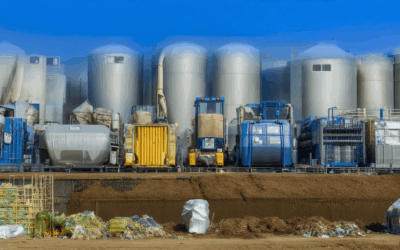As the world faces escalating challenges from climate change, the need for sustainable climate practices has never been more urgent. These practices represent a cornerstone of efforts to mitigate environmental degradation and promote a healthier planet for future generations. In this comprehensive guide, we will delve into the nine essential pillars of sustainable climate practices, exploring how individuals and communities can adopt meaningful strategies to reduce their ecological footprint. From reducing carbon emissions to conserving resources, sustainable practices offer a pathway toward a more resilient and eco-friendly lifestyle. By understanding and implementing these strategies, we can contribute to a brighter, cleaner future while ensuring the preservation of natural ecosystems for years to come.

What Are Sustainable Practices for Climate Change?
Sustainable practices are essential to combatting climate change and preserving the planet for future generations. Here are some actionable steps you can take:
- Reduce Carbon Footprint : Minimize your contribution to greenhouse gas emissions by adopting sustainable transportation methods. Use public transportation, cycle, or walk whenever possible. For longer distances, opt for trains over airplanes, as they emit fewer pollutants.
- Adopt Renewable Energy Sources : Transition to cleaner energy options such as solar panels or wind power for your home or business. These alternatives reduce reliance on fossil fuels and lower your carbon footprint.
- Conserve Resources : Save water by installing water-saving devices and fixing leaky pipes. Reduce energy waste through efficient appliances and lighting, such as LED bulbs, which last longer and consume less power.
- Support Sustainable Agriculture : Choose organic foods grown without synthetic pesticides or fertilizers. Buy locally-grown produce to reduce transportation emissions and support regional farmers.
- Limit Meat Consumption : Reduce your intake of red meat and processed foods, as they have a higher environmental impact. Consider plant-based diets or incorporating more fish into your meals.
- Protect Biodiversity : Support wildlife conservation efforts by participating in tree-planting initiatives or joining organizations focused on habitat preservation. Avoid harmful chemicals and plastics to protect ecosystems.
- Shop Sustainably : Purchase products made from recycled materials and support fair trade practices. Opt for biodegradable packaging and minimize unnecessary purchases to reduce waste.
- Engage in Community Initiatives : Join local clean-up drives or volunteer for tree-planting events. Participate in campaigns aimed at raising awareness about climate issues and promoting sustainable living.
By implementing these practices, we can work towards creating a healthier planet for ourselves and future generations. Remember, every small effort contributes to a bigger change.
The 5 Cs of Sustainability
The 5 Cs of sustainability provide a comprehensive framework for guiding sustainable practices. Here’s a breakdown of each component:
- Clean : Focuses on environmental health and reducing pollution and waste. This includes adopting renewable energy sources, reducing carbon footprints, and promoting sustainable agriculture.
- Community : Emphasizes social equity and inclusivity. It involves fostering strong community bonds, supporting local initiatives, and ensuring equitable growth opportunities for all members of society.
- Culture : Examines cultural norms and values aligned with sustainability. It encourages the preservation of traditional knowledge and practices that contribute positively to environmental and social well-being.
- Care : Highlights the importance of responsible resource management and long-term stewardship. It focuses on caring for ecosystems, ensuring resources are used sustainably for future generations.
- Corporate Governance : Ensures that businesses operate ethically and responsibly. It involves integrating sustainability into corporate policies, practices, and decision-making processes to drive positive societal impact.
These five components collectively address the interconnected aspects of environmental, social, and economic sustainability, paving the way for a healthier planet and a more resilient society.

Sustainable Environmental Practices
Sustainable environmental practices are essential for preserving our planet and ensuring a healthier future for generations to come. By adopting eco-friendly habits, we can significantly reduce our carbon footprint and promote responsible resource use.
Reduce
- Minimize plastic usage by opting for reusable products and avoiding single-use items.
- Conserve water by fixing leaks and using water-efficient appliances.
- Lower energy consumption through energy-efficient appliances and behaviors like turning off lights when not needed.
- Support sustainable agriculture by purchasing organic and locally-grown foods.
- Reduce food waste by planning meals carefully and storing leftovers properly.
Reuse
- Repurpose old items for new uses, such as turning jars into planters or using clothing as rags.
- Join local reuse programs or participate in community swap events to share and exchange goods.
- Use cloth menstrual products and other sustainable alternatives to reduce waste.
- Participate in Freecycle or similar platforms to give away unused items and get free goods.
Recycle
- Recycle paper, glass, metal, and plastic wherever possible, ensuring items are clean and free of food residue.
- Look for local recycling centers that accept hazardous materials like batteries and electronics.
- Donate usable clothes, furniture, and household items to charities instead of discarding them.
- Separate recyclables from trash and ensure your community has effective recycling infrastructure.
Conservation
- Conserve water by installing low-flow fixtures and limiting outdoor irrigation during dry seasons.
- Save energy by using programmable thermostats and switching to LED lighting.
- Minimize waste generation by choosing products with minimal packaging and supporting zero-waste stores.
- Reduce chemical use by making your own cleaning supplies or opting for biodegradable options.
Composting
- Start a home composting system to turn kitchen scraps into nutrient-rich soil amendments.
- Participate in community composting programs to manage organic waste effectively.
- Use compost in your garden to enhance plant growth and reduce the need for synthetic fertilizers.
Community Involvement
- Join local environmental groups or volunteer organizations focused on sustainability.
- Attend community clean-up events or beach cleanups to contribute to coastal conservation.
- Support initiatives like tree-planting campaigns to combat deforestation and improve air quality.
- Pyrolysium offers innovative solutions for waste management, transforming organic waste into biochar for soil enrichment.
By integrating these practices into our daily lives, we can create a more sustainable and livable world for future generations. Visit Pyrolysium to learn more about their advanced waste-to-resource technologies and how you can contribute to a cleaner, greener planet.

What are the six basic environmental sustainability principles?
The six basic environmental sustainability principles, often referred to as the “Six Rs” of sustainability, provide a framework for promoting eco-friendly practices. These principles are essential for minimizing waste, lowering environmental impact, and fostering sustainable living.
- Reduce : Minimize your consumption of resources and avoid wasting materials. Reducing your ecological footprint helps conserve natural resources and reduces pollution.
- Reuse : Use materials again whenever possible. Reusing products extends their lifecycle and reduces the demand for new resources.
- Recycle : Process waste materials into reusable forms. Recycling helps divert items from landfills and contributes to the creation of new products.
- Refuse : Avoid purchasing items that aren’t necessary. Refusing unnecessary products reduces waste and supports a simpler, more intentional lifestyle.
- Repair : Mend broken or damaged items rather than discarding them. Repairing extends the life of products and reduces waste.
- Rethink : Consider alternative approaches to consumption and production. Rethinking your habits and choices can lead to more sustainable and ethical decisions.
By adopting these principles, individuals and communities can work toward a more sustainable future, helping to protect the environment and promote social well-being. Learn more about sustainable living at Pyrolysium.org .
The 9 Pillars of Sustainability
The concept of sustainability encompasses various interconnected dimensions, each contributing to the well-being of our planet and its inhabitants. Below are the nine key pillars of sustainability:
- Social Equity : Ensuring that sustainable development benefits all members of society, including vulnerable populations. This involves addressing inequalities through inclusive growth, equitable access to resources, and social justice initiatives.
- Resource Efficiency : Optimizing the use of natural resources to minimize waste and maximize productivity. This includes adopting practices that reduce consumption, enhance recycling, and promote renewable energy.
- Climate Action : Implementing measures to reduce greenhouse gas emissions and adapt to the impacts of climate change. Strategies include transitioning to low-carbon energy sources, preserving forests, and supporting carbon sequestration efforts.
- Economic Resilience : Building a robust and adaptive economy that thrives while minimizing environmental harm. This involves fostering circular economies, supporting small and medium-sized enterprises, and encouraging innovation in sustainable industries.
- Water Stewardship : Managing water resources sustainably to meet current and future needs. This includes efficient water usage, wastewater treatment, and protecting critical water ecosystems to prevent pollution and desertification.
- Biodiversity Conservation : Protecting and restoring ecosystems to maintain biodiversity. Efforts include habitat restoration, combating deforestation, and promoting organic farming practices that support local wildlife.
- Social Justice : Addressing systemic inequities to ensure that sustainable development reaches all segments of society. This involves advocating for fair labor practices, universal access to education and healthcare, and policies that uplift marginalized communities.
- Circular Economy : Designing products and systems for longevity, reuse, and recycling to reduce waste. This approach emphasizes product life extension, closed-loop systems, and regenerative practices that restore resources to their original state.
- Governance and Accountability : Establishing strong regulatory frameworks and institutional mechanisms to monitor and enforce sustainability practices. This includes transparency, public participation, and holding corporations and governments accountable for their environmental impact.
By integrating these pillars, we can work towards a sustainable future that balances human progress with the preservation of our planet’s health and vitality.

What are the 6 R’s of Sustainability?
The 6 R’s of sustainability are a fundamental framework for promoting eco-friendly practices. They are:
- Reduce : Minimize resource consumption by using less water, energy, and materials.
- Reuse : Find new purposes for items rather than discarding them, such as repurposing household goods or starting a compost pile.
- Recycle : Process materials to create new products, ensuring proper separation of recyclables for efficient processing.
- Rethink : Approach daily activities with sustainability in mind, considering alternatives like sustainable lifestyles or renewable energy sources.
- Refuse : Decline offers for non-essential items, supporting ethical consumerism through local and organic purchases or fair trade practices.
- Repair : Extend the lifespan of goods by fixing clothing, appliances, or vehicles, reducing waste and resource use.
These principles collectively encourage a shift towards more mindful and responsible living, fostering environmental stewardship and a healthier planet for future generations.




0 Comments